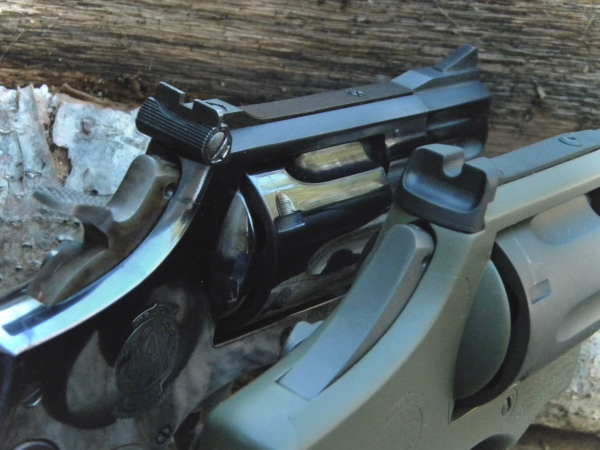Many of the pistols produced today have sights mounted in dovetail cuts in the slide or, in the case of revolvers, in the barrel and frame. Even though they can be adjusted left and right for windage, they are still considered “fixed” sights. True “adjustable” sights have a rear sight that can be shifted for both windage and elevation in order to regulate point of aim to the bullet’s point of impact. Each configuration has advantages and disadvantages. Selecting the “best” sights for your gun depends on your application.

In the early days of pistols there were no adjustable sights. Both front and rear sights were part of the frame and barrel, or the slide, and were completely fixed. The only way to adjust the pistol’s point of impact was to remove or add material to the sights. Removing material was an easy job. Just cut down the offending sight through careful application of a hand file. Adding material was more difficult. There was welding involved, and after building up the sight it still had to be filed to the proper height.
Factories eventually began offering adjustable sights. For example, Smith & Wesson revolvers could be purchased with either fixed or adjustable sights, depending on the specific model. This was true with semi-auto pistols as well. Browning Hi Powers were offered with both fixed or adjustable sights. Gunsmiths also began modifying customer pistols to accept adjustable sight components, and companies like BoMar began producing aftermarket adjustable sights.
Adjustable sights for a handgun have advantages. They normally offer a more defined sight picture, which generally improves accuracy. The ability to adjust the pistol’s point of aim into alignment with the bullet’s point of impact is a plus, especially for target matches and competitive shooting where fractions of an inch make a big difference in your final score. The downside of adjustable sights is their fragility. The small screws, springs and detents don’t hold up well under hard use and it’s easy for them to get damaged and/or come out of adjustment.
Fixed sights are more durable. They contain fewer components than adjustable sights. With revolvers that I carry which came with adjustable rear sights I replace them with a fixed rear sight that’s made for the adjustable sight frame. But they offer no adjustment for elevation. As described above, you can regulate them by removing or adding material but, other than that you adjust by modifying your sight picture. For example, your hits are striking low on target. When sighting on target instead of holding the top of the front sight level with the top of the rear sight you hold the front sight slightly higher than the rear. If it’s a slight degree of difference between point of aim and point of impact it’s probably not going to be a factor for defensive shooting. However, I’ve seen fixed sight pistols that printed ten- or twelve-inches difference between point of aim and point of impact at seven yards. That is too much, and can be enough to cause a complete miss, especially on a small target like the head. In this case modifications will be necessary.
Regardless of what type of sights you use it’s necessary to get on the range and fire the gun at various distances to confirm zero, or determine what’s needed to arrive at a workable solution. Then, it’s on you to apply the fundamentals of marksmanship to produce accurate hits on target.
Tiger McKee is director of Shootrite Firearms Academy. He is the author of The Book of Two Guns, AR-15 Skills and Drills, has a regular column in American Handgunner and makes some cool knives and custom revolvers. www.shootrite.org or visit Shootrite’s Facebook page for other details.